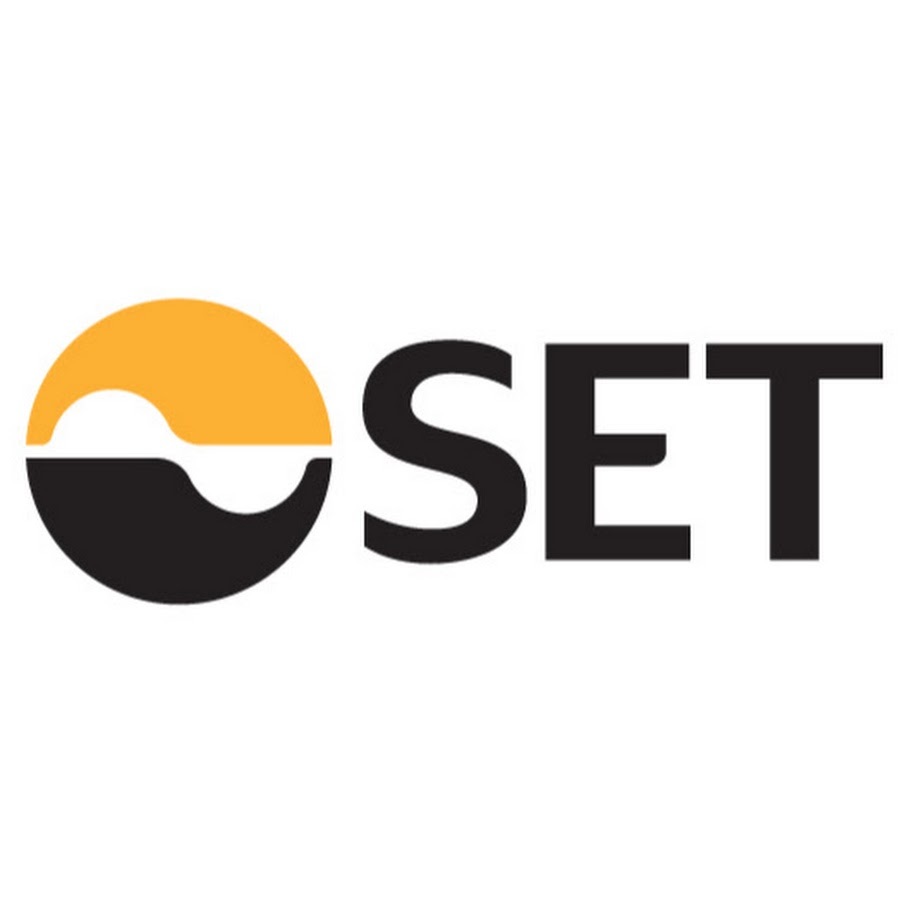Freelancing offers flexibility and independence, but it also presents unique retirement planning challenges. This guide meticulously addresses the specific needs of freelancers, offering a roadmap to secure a comfortable future. From understanding the intricacies of various retirement plans to establishing a realistic savings strategy, we’ll cover every essential aspect of creating a sound retirement plan tailored for your unique circumstances.
This comprehensive guide walks you through the entire process, from assessing your needs and setting realistic goals to choosing the right retirement plan and implementing a sound management strategy. We’ll also explore tax implications and the crucial role of professional guidance in navigating the complexities of self-employment retirement planning.
Understanding Freelancing Retirement Planning Needs
Retirement planning for freelancers presents unique challenges compared to traditional employees. The lack of employer-sponsored retirement plans necessitates proactive and early planning to ensure a secure financial future. This section explores the distinct needs and strategies freelancers should adopt to achieve their retirement goals.Freelancers often face a different reality than employees concerning retirement planning. Traditional retirement plans, like 401(k)s and pensions, are typically offered by employers.
Freelancers must take the initiative to establish and manage their own retirement accounts, often requiring a deeper understanding of various options and their implications.
Unique Retirement Planning Challenges for Freelancers
Freelancers face several unique hurdles in retirement planning. Income fluctuations are common, as projects and clients can vary. This unpredictable income stream can make consistent savings challenging. Additionally, freelancers frequently lack the employer-sponsored retirement plans that provide crucial financial support for their future. These factors highlight the importance of early planning and proactive financial strategies.
Differences Between Traditional Employee and Freelancer Retirement Plans
Traditional employee retirement plans, like 401(k)s and pensions, often provide employer matching contributions, which significantly boost savings. Freelancers must rely on their own contributions and available tax-advantaged accounts. This difference necessitates a more focused approach to retirement planning, emphasizing personal responsibility and informed decision-making.
Importance of Early Planning for Freelancers
Given the absence of employer-sponsored plans, early planning is paramount for freelancers. The power of compounding returns is crucial, and the earlier savings begin, the greater the potential for accumulated wealth over time. A 20-year head start can have a profound impact on retirement savings.
Impact of Income Streams on Retirement Savings
Freelancers frequently have diverse income streams, potentially including project fees, hourly rates, and occasional bonuses. Understanding how these different income sources fluctuate and their tax implications is vital for creating a realistic retirement savings plan. Regular evaluation and adjustments are essential to maintain a consistent savings trajectory.
Comparison of Retirement Plan Options for Freelancers
| Retirement Plan | Description | Tax Advantages | Potential Drawbacks |
|---|---|---|---|
| SEP IRA | Simplified Employee Pension Individual Retirement Account | Employer contributions are tax-deductible, and earnings grow tax-deferred. | Limited contribution limits and no employer matching. |
| Solo 401(k) | A retirement plan for self-employed individuals and small business owners. | Similar tax benefits to SEP IRAs; can include both employer and employee contributions. | Higher administrative costs compared to SEP IRAs. |
| Traditional IRA | Individual Retirement Account | Tax-deductible contributions and tax-deferred growth. | Potential for higher taxes in retirement if withdrawals are not strategically managed. |
| Roth IRA | Individual Retirement Account where contributions are made after-tax, but withdrawals in retirement are tax-free. | Tax-free withdrawals in retirement. | Contributions are not tax-deductible. |
Tax Implications of Retirement Plan Choices
Different retirement plan choices have varying tax implications during both accumulation and distribution phases. Careful consideration of these implications is crucial for optimizing tax efficiency. Consult with a qualified financial advisor to understand the specific tax consequences relevant to your individual circumstances. The tax implications are complex and should be assessed by a professional.
Establishing a Realistic Retirement Savings Goal

Planning for retirement as a freelancer requires a meticulous approach, as traditional employer-sponsored plans are often unavailable. This section focuses on establishing a realistic retirement savings goal, a crucial step for financial security in later life. We’ll explore methods to determine your desired retirement lifestyle, calculate necessary savings, and create a personalized plan.A well-defined retirement savings goal acts as a roadmap, guiding your financial decisions and motivating you to stay on track.
By understanding your desired lifestyle and associated expenses, you can develop a realistic savings strategy.
Determining Desired Retirement Lifestyle
Understanding your ideal retirement lifestyle is paramount to setting realistic savings goals. Consider the following factors:
- Desired level of comfort: Will you maintain your current lifestyle, or aspire to something more luxurious? Assess your current spending habits and project how they might evolve in retirement.
- Travel aspirations: Do you dream of extensive travel? Calculate the associated costs, including flights, accommodations, and activities. This will influence your savings target.
- Healthcare expenses: Healthcare costs can significantly impact your retirement budget. Consult with financial advisors or use online tools to estimate potential medical expenses.
- Potential for additional income: Assess whether you intend to pursue part-time work or other income streams in retirement. This may influence your savings target.
Calculating Necessary Savings
Once you’ve defined your retirement lifestyle, you need to determine the financial resources required to sustain it.
- Estimate retirement expenses: Develop a detailed budget outlining your projected monthly expenses in retirement. Include housing, food, transportation, entertainment, healthcare, and other essential needs. Use historical data and current cost estimates for accurate projections.
- Estimate retirement income: Consider potential sources of retirement income, such as Social Security benefits, pensions (if applicable), and savings. Account for potential investment returns to determine how much savings are needed.
- Inflation adjustment: Inflation erodes the purchasing power of your savings over time. Adjust your savings goal to account for inflation using reputable inflation calculators or financial projections.
- Use retirement calculators: Numerous online retirement calculators are available to help you estimate the amount you need to save. These tools often allow you to input specific parameters such as desired lifestyle and expected returns.
Sample Budget Template
A well-structured budget is essential for tracking income and expenses and identifying areas for savings. This template provides a framework for freelancers:
| Category | Monthly Income | Monthly Expenses | Savings Potential |
|---|---|---|---|
| Housing | |||
| Food | |||
| Transportation | |||
| Healthcare | |||
| Entertainment | |||
| Savings | |||
| Other | |||
| Total |
This template provides a starting point. Adapt it to your specific circumstances and financial situation.
Significance of Inflation in Retirement Planning
Inflation significantly impacts retirement savings. The purchasing power of your money decreases over time.
“To maintain your desired lifestyle in retirement, you must adjust your savings goal to account for inflation.”
A crucial step in retirement planning is to account for inflation. This involves adjusting your savings goal to maintain its purchasing power over time.
Creating a Personalized Retirement Savings Plan
Creating a personalized plan involves setting specific goals and timelines.
- Define specific goals: Clearly define your retirement financial goals. Consider your desired lifestyle and financial security level. Establish a clear timeline for achieving your goals.
- Determine your investment timeline: Understand the impact of your investment timeline on your retirement savings. A longer timeline generally allows for more risk-taking and higher potential returns.
- Set realistic savings targets: Develop a savings plan with realistic targets based on your income and expenses. Prioritize consistent contributions to your savings accounts.
Diversifying Retirement Investments
Diversification is crucial for managing risk and maximizing returns in retirement.
- Stock market investments: Consider a diversified portfolio of stocks to potentially achieve higher returns.
- Bond investments: Bonds provide a more stable return and can help balance risk in your portfolio.
- Mutual funds: Mutual funds offer diversification across various asset classes.
- Real estate investments: Real estate investments may offer appreciation potential but carry specific risks.
Choosing the Right Retirement Plan
Selecting the appropriate retirement plan is crucial for freelancers to ensure a secure financial future. Different plans cater to varying needs and circumstances. Understanding the nuances of each option allows freelancers to make informed decisions aligned with their individual financial situations and long-term goals.
Retirement Plan Options for Freelancers
Several retirement plan options are available to freelancers, each with its own set of advantages and disadvantages. Key choices include SEP IRAs, Solo 401(k)s, and SIMPLE IRAs.
SEP IRAs (Simplified Employee Pension Plans)
SEP IRAs are a straightforward option for freelancers. They offer flexibility and allow contributions to be made based on a percentage of net self-employment income. This approach can be particularly suitable for those with fluctuating income streams.
Contribution limits and deadlines vary based on the tax year. Consult a tax professional for specific guidance.
Solo 401(k)s
Solo 401(k)s are another common choice, providing more comprehensive retirement savings opportunities than SEP IRAs. They permit both employer and employee contributions, allowing for potentially higher savings and more flexibility in contribution strategies.
Solo 401(k)s can be more complex to manage compared to SEP IRAs, requiring careful consideration of contribution limits and administrative procedures.
SIMPLE IRAs (Savings Incentive Match Plan for Employees)
SIMPLE IRAs are a less complex alternative, suitable for freelancers with modest income. These plans typically involve a matching contribution from the employer (the freelancer in this case) up to a certain percentage of their compensation. This matching element incentivizes saving and can be a great starting point for building retirement savings.
SIMPLE IRAs offer a good balance of simplicity and savings potential, making them appropriate for freelancers with moderate income.
Tax Implications of Different Plans
Tax implications differ significantly across these plans. SEP IRAs and Solo 401(k)s offer tax-deductible contributions, allowing for immediate tax savings. SIMPLE IRAs often have similar tax advantages. However, the specific tax treatment depends on the individual’s circumstances and the applicable tax laws. Consulting a tax advisor is highly recommended.
Comparison of Retirement Plans
| Retirement Plan | Contribution Limits (2024) | Contribution Deadlines | Administrative Requirements | Suitability |
|---|---|---|---|---|
| SEP IRA | 20% of net self-employment income, or $66,000 (whichever is less) | Generally, by the tax deadline (April 15th) | Relatively simple administration | Suitable for freelancers with fluctuating income. |
| Solo 401(k) | 20% of net self-employment income, or $66,000 (whichever is less) | Generally, by the tax deadline (April 15th) | More complex administration | Suitable for freelancers seeking higher savings potential. |
| SIMPLE IRA | $16,500 (2024) | Generally, by the tax deadline (April 15th) | Moderately complex | Suitable for freelancers with modest income. |
The table above provides a concise overview of the contribution limits, deadlines, and administrative requirements for each retirement plan. Consult a tax professional for specific guidance tailored to your circumstances.
Implementing and Managing the Retirement Plan

Successfully navigating retirement planning as a freelancer requires proactive implementation and ongoing management of your chosen retirement account. This involves understanding the intricacies of opening and funding your account, tracking your progress, and consistently adjusting your strategy based on market conditions and your evolving needs. By diligently following these steps, you can build a strong financial foundation for a secure and fulfilling retirement.Effective management of your retirement plan hinges on consistent contributions, careful investment diversification, and proactive risk management.
Understanding the dynamics of your chosen investment options will allow you to make informed decisions and optimize your returns over time.
Opening and Funding a Retirement Account
To initiate your retirement plan, you must first choose the appropriate account type. This selection is directly tied to your personal financial situation and tax preferences. Following this, you’ll need to complete the necessary paperwork, including account applications and required documentation. This may include proof of income and identity verification. After successfully opening the account, funding it becomes the next critical step.
Regular contributions are crucial for long-term growth.
Tracking Retirement Contributions and Investment Growth
Regular monitoring of your retirement account is essential. This allows you to track your contributions and the growth of your investments. Utilizing online account portals or dedicated financial software can provide real-time insights into your account performance. By regularly reviewing your account activity, you can identify any discrepancies and address any concerns promptly. A simple spreadsheet can be used to track your contributions, investment returns, and fees over time.
Importance of Regular Contributions and Investment Diversification
Consistent contributions to your retirement account are fundamental to building a substantial nest egg. The power of compounding returns over time cannot be overstated. The sooner you start, the more time your investments have to grow. Diversification is equally important. Spreading your investments across different asset classes, such as stocks, bonds, and real estate, can help mitigate risk and potentially enhance returns.
This strategy reduces the impact of any single investment’s poor performance.
Strategies for Managing Risk in Retirement Investments
Understanding and managing risk is crucial. Consider your risk tolerance and the time horizon for your retirement investments. A longer time horizon allows for a higher allocation to riskier, potentially higher-return assets. You may wish to consider asset allocation strategies that align with your risk profile. Diversification across various asset classes, as mentioned earlier, is a key risk mitigation strategy.
Examples of Investment Options Suitable for Freelancers
A range of investment options are available for freelancers. These may include mutual funds, exchange-traded funds (ETFs), and individual stocks. Mutual funds and ETFs offer diversification across a range of assets, while individual stocks allow for more targeted investment strategies. Consider the potential returns and associated risks of each option before making a decision. For example, a balanced portfolio combining low-risk bonds with higher-growth stocks is a common strategy.
Strategies for Managing and Optimizing Retirement Plan Contributions Over Time
Regular review and adjustments to your retirement plan are essential. As your financial situation evolves, re-evaluate your investment strategy and contributions. For instance, if your income increases, you may be able to increase your contributions. Similarly, as you get closer to retirement, you may wish to shift your investment portfolio toward more conservative options to reduce risk.
Professional financial advice can help you navigate these adjustments effectively.
Tax Considerations for Freelancers’ Retirement Plans
Planning for retirement as a freelancer requires careful consideration of the tax implications involved in contributing to and withdrawing from retirement accounts. Understanding these nuances is crucial for maximizing your savings and minimizing potential tax burdens. Proper planning can significantly impact your long-term financial security.Tax laws regarding retirement savings can be complex, especially for self-employed individuals. This section delves into the tax advantages and implications of various retirement plan choices, highlighting strategies to navigate these complexities effectively.
Tax Advantages of Contributing to a Retirement Plan
Contributing to a retirement plan as a freelancer offers significant tax advantages. These contributions reduce your taxable income, which directly translates to lower tax payments in the current year. The specific tax benefits depend on the type of retirement plan chosen, and some plans allow for deductions of contributions while others provide tax-deferred growth.
Tax Implications of Withdrawing Funds During Retirement
Withdrawing funds from a retirement plan during retirement is generally tax-dependent. Distributions are typically taxed as ordinary income, and the tax liability is determined based on your overall income during retirement. This taxation structure ensures a fair balance between the tax advantages enjoyed during contributions and the subsequent obligations during withdrawals.
Potential Tax Penalties for Early Withdrawals
Early withdrawals from retirement plans, made before reaching a certain age, often incur penalties. These penalties can be substantial and reduce the overall value of your retirement savings. Understanding the specific regulations and implications of early withdrawals is essential to avoid unnecessary financial burdens.
Summary of Tax Implications of Various Retirement Plan Choices
| Retirement Plan | Tax Implications on Contributions | Tax Implications on Withdrawals |
|---|---|---|
| Traditional IRA | Deductible contributions reduce current taxable income. | Withdrawals are taxed as ordinary income in retirement. |
| Roth IRA | Contributions are not tax-deductible, but withdrawals in retirement are tax-free. | Withdrawals are tax-free in retirement. |
| SEP IRA | High contribution limits and potential deductions for contributions. | Withdrawals are taxed as ordinary income in retirement. |
| SIMPLE IRA | Deductible contributions reduce current taxable income. | Withdrawals are taxed as ordinary income in retirement. |
Examples of Tax Deductions Freelancers Can Claim
Freelancers can claim various deductions related to retirement savings, including those for contributions to traditional IRAs, SEP IRAs, and SIMPLE IRAs. Furthermore, business-related expenses, such as those related to retirement planning, might also be eligible for deductions.
Tips for Understanding and Navigating the Complexities of Self-Employment Taxes and Retirement Planning
Seeking professional advice from a qualified tax advisor or financial planner is highly recommended. They can help you navigate the complexities of self-employment taxes and retirement planning, tailoring strategies to your specific circumstances. Thorough research and understanding of the applicable tax laws are also essential for effective planning. Consult the IRS website and relevant publications for the most current and accurate information.
It is important to remember that tax laws can change, so staying informed is critical. A comprehensive understanding of the tax implications of various retirement plan options can significantly enhance your financial security.
Seeking Professional Guidance

Planning for retirement as a freelancer requires careful consideration of unique financial circumstances. Seeking professional guidance can significantly enhance the effectiveness and success of your retirement plan. This section will Artikel the types of professionals who can provide valuable advice, highlighting the benefits of working with a specialized advisor and providing practical steps for finding and evaluating such professionals.
Types of Professionals for Retirement Planning
Understanding the different types of professionals who can assist in retirement planning can help freelancers make informed decisions. Financial advisors, Certified Public Accountants (CPAs), and estate planning attorneys are among the professionals who can provide specialized guidance. Each professional brings a unique skillset to the table.
Benefits of Working with a Financial Advisor Specializing in Freelance Retirement Plans
A financial advisor specializing in freelance retirement plans can provide tailored strategies. They possess expertise in navigating the complexities of self-employment income, fluctuating cash flow, and unique tax considerations. This specialized knowledge translates into a more personalized retirement plan, which is often crucial for freelancers. This personalized approach can help you anticipate potential challenges and create a more robust plan for long-term financial security.
This tailored approach can be invaluable in optimizing retirement savings strategies.
Finding a Qualified Professional
Finding a qualified financial advisor is essential. Begin by asking for referrals from trusted colleagues, friends, or mentors. Online resources, such as professional associations or online directories, can provide a list of qualified professionals. Check for certifications and licenses to ensure their expertise and legitimacy. Review the advisor’s experience with freelancers or self-employed individuals, and their understanding of freelance tax laws.
Look for advisors who demonstrate a strong understanding of the unique tax and retirement planning needs of freelancers.
Questions to Ask a Financial Advisor
Before hiring a financial advisor, it is crucial to ask pertinent questions. This process helps ensure a suitable match between your needs and the advisor’s expertise. These questions are designed to evaluate the advisor’s suitability and ensure their capabilities align with your specific retirement goals.
- What is your experience working with freelancers or self-employed individuals?
- What is your approach to retirement planning for freelancers, and how does it differ from traditional approaches?
- What are your fees and payment structures?
- Can you provide references from past clients?
- What is your process for ongoing review and adjustments to the retirement plan?
- How do you stay informed about changes in tax laws affecting freelancers?
Qualifications and Services of Different Financial Professionals
The table below summarizes the qualifications and services of different financial professionals.
| Professional | Qualifications | Services |
|---|---|---|
| Financial Advisor | Certified Financial Planner (CFP), Chartered Financial Analyst (CFA), or similar designations | Retirement planning, investment management, estate planning, budgeting |
| CPA | Certified Public Accountant (CPA) | Tax planning, financial reporting, compliance |
| Estate Planning Attorney | Juris Doctor (JD) | Estate planning, asset protection, probate |
Importance of Ongoing Review and Adjustments
Retirement plans are not static documents. Economic conditions, personal circumstances, and tax laws can change over time. Regular review and adjustments are crucial to ensure your plan remains aligned with your goals. This proactive approach is critical to maintaining a robust retirement plan. Regular reviews allow for modifications to investment strategies and adjustments to savings targets.
Ultimate Conclusion

In conclusion, this guide provides a detailed roadmap for freelancers to build a secure retirement. By understanding the unique challenges and opportunities, developing a personalized savings plan, selecting the right retirement vehicle, and actively managing your investments, you can achieve financial independence and peace of mind in your golden years. Remember, proactive planning is key to a fulfilling and financially secure retirement, regardless of your career path.